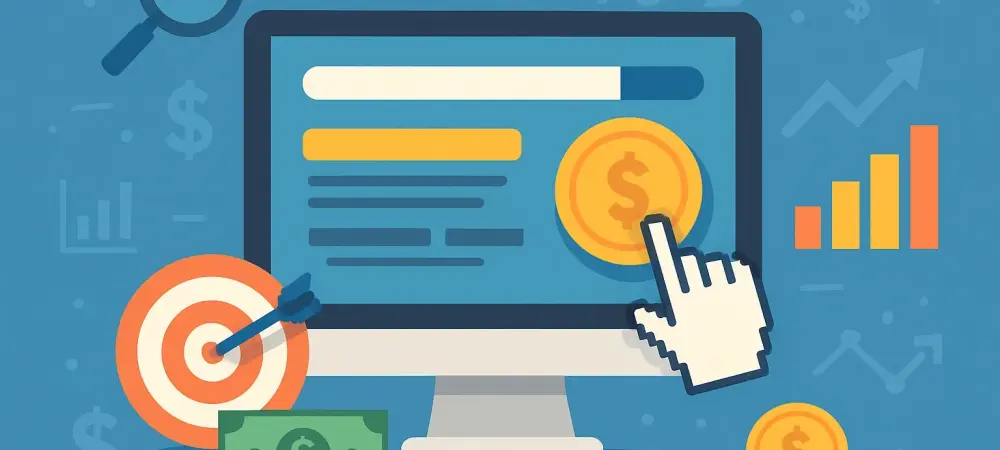In today’s competitive digital marketing landscape, ensuring that every dollar spent on Pay-Per-Click (PPC) campaigns yields the greatest possible return on investment (ROI) is critical. One of the most effective ways to achieve this is by leveraging smart audience filters. This guide will help marketers optimize their PPC efforts by targeting audiences effectively and excluding unqualified leads from campaigns.
The Power of Audience Filters in Enhancing PPC ROI
Smart audience filters serve as a vital tool for refining PPC campaigns. By focusing marketing efforts on the most promising consumer segments, businesses can significantly increase their ROI. Audience filters enable advertisers to identify and zero in on the most relevant users, ensuring precision in reaching potential customers. This approach streamlines ad spending and enhances conversion rates by ensuring that messages reach individuals most likely to engage with a brand.
The Evolution of PPC: From Keywords to Audience Filters
Historically, PPC strategies centered around keyword targeting, where the primary focus was on selecting relevant search terms. However, as technologies have evolved, so too has the approach to PPC advertising. The modern digital environment necessitates a shift toward audience-centric strategies, facilitated by advances in data analytics and consumer behavior insights. This paradigm shift reflects broader industry trends, underscoring the need for advertisers to embrace new practices that prioritize understanding target audiences over simply targeting keywords.
Implementing Smart Audience Filters in PPC Campaigns
Step 1: Identifying and Defining Your Ideal Audience
To effectively implement smart audience filters, the initial step involves accurately identifying your ideal audience. This requires tapping into available analytics to delineate profiles based on consumer behaviors, preferences, and interactions with your brand. Accurate insights derived from historical data are paramount for creating a precise audience profile. Reliance on assumptions without data support can lead to targeting inefficiencies; hence, comprehensive data analysis is crucial.
Insight: Leveraging Historical Data vs. Market Assumptions
Histories etched in data often provide more reliable insights than intuition or market trends. Marketers should prioritize historical data analysis to cultivate close alignment with actual consumer profiles. This strategy surpasses mere educated guesses, enhancing precision and efficiency in audience definition.
Step 2: Effective Targeting Using Audience Filters
Once the ideal audience is identified, implementing segmentation strategies becomes vital. Effective targeting involves appealing to customer segments defined by demographics, geographical locations, behaviors, and interests. By leveraging these distinct filters, brands can ensure messages resonate strongly with their intended recipients, boosting engagement and conversion outcomes.
Tip: Enhancing Targeting Accuracy
To refine targeting accuracy, advertisers can utilize AI and machine learning tools. These technologies allow for dynamic adjustments to be made to audience filters, ensuring continual alignment with evolving consumer behaviors. Embracing these tools enhances precision, translating to more successful campaign outcomes.
Step 3: Employing Audience Exclusion Techniques
Excluding non-ideal audiences is equally important in optimizing PPC campaigns. Effective exclusion techniques minimize unnecessary ad spend on individuals unlikely to convert. By carefully delineating exclusion parameters, advertisers prevent budgetary wastage and focus resources on the most promising leads.
Warning: Managing Platform-Specific Limitations
Platforms like Google and Meta impose certain audience targeting and exclusion limitations. It’s crucial for advertisers to remain adaptable in the face of these constraints, employing creative solutions to work within these boundaries and achieve optimal campaign results.
Recap and Key Recommendations
To summarize, implementing smart audience filters in PPC campaigns involves:
- Thoroughly analyzing data to define your ideal audience
- Employing advanced targeting with precise audience segments
- Leveraging technology such as AI for enhanced targeting accuracy
- Diligently excluding ineffective audiences to optimize budget efficiency
These strategies, when executed effectively, can significantly amplify the return on advertising investments.
Applying Smart Audience Filters Beyond PPC
While this guide focuses on PPC, the principles of smart audience filtering extend to broader marketing strategies. Future trends indicate that audience targeting will continue to evolve, with technology offering even more sophisticated ways to reach consumers. Marketers should stay apprised of these developments, ensuring their approaches remain flexible and adaptable.
Conclusion: Embracing Smart Audience Filters for Enhanced PPC Success
By implementing smart audience filters, businesses have the opportunity to maximize PPC effectiveness. This strategic approach not only streamlines expenditures but also ensures higher conversion rates by reaching precisely the right audience segments. Marketers are encouraged to continuously refine their targeting techniques, leveraging available tools to stay ahead and make the most of their advertising efforts. The pathway to enhanced PPC success lies in adopting these refined strategies for optimal audience engagement and conversion.

